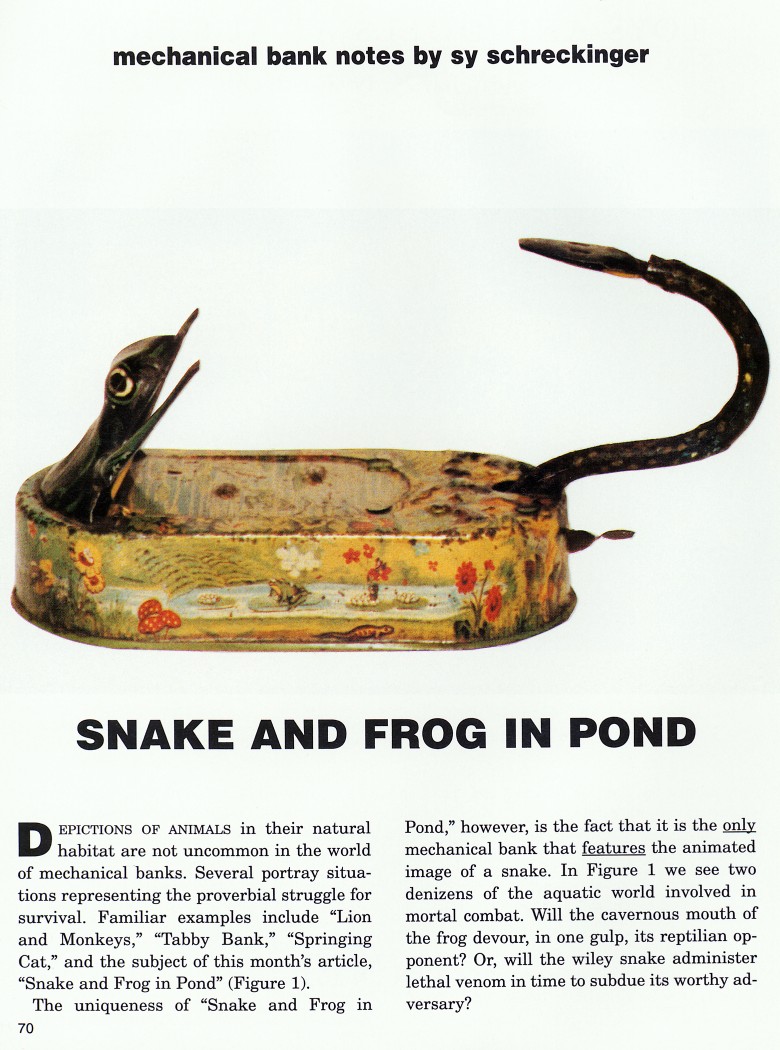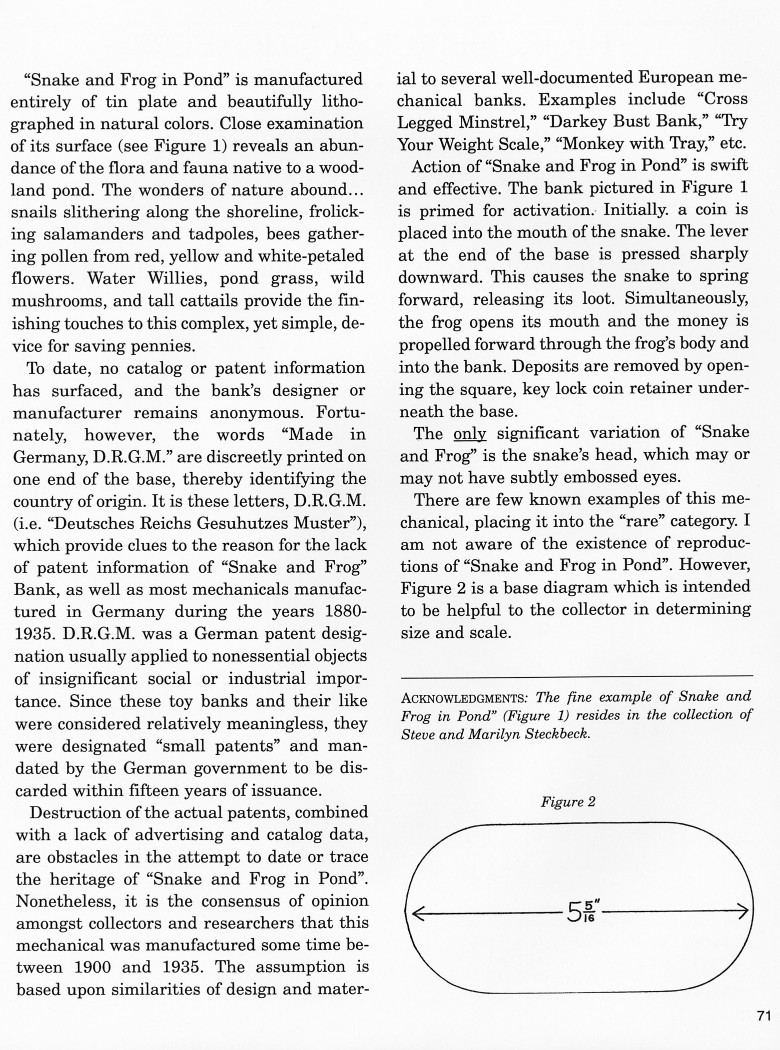|
Snake and Frog in Pond
by Sy Schreckinger – ANTIQUE TOY WORLD Magazine – July, 1998
Depictions of animals in their natural habitat
are not uncommon in the world of mechanical banks. Several portray situations
representing the proverbial struggle for survival. Familiar examples
include "Lion and Monkeys," "Tabby Bank," "Springing Cat," and the subject
of this month's article, "Snake and Frog in Pond" (Figure 1).
The uniqueness of "Snake and Frog in Pond," however, is the fact that
it is the only mechanical bank that features the animated image of a
snake. In Figure 1 we see two denizens of the aquatic world involved in
mortal combat. Will the cavernous mouth of the frog devour, in one gulp,
its reptilian opponent? Or, will the wiley snake administer lethal venom
in time to subdue its worthy adversary?
"Snake and Frog in Pond" is manufactured entirely of tin plate and
beautifully lithographed in natural colors. Close examination of its
surface (see Figure 1) reveals an abundance of the flora and fauna native
to a woodland pond. The wonders of nature abound... snails slithering
along the shoreline, frolicking salamanders and tadpoles, bees gathering
pollen from red, yellow and white-petaled flowers. Water lilies, pond
grass, wild mushrooms, and tall cattails provide the finishing touches to
this complex, yet simple, device for saving pennies.
To date, no catalog or patent information has surfaced, and the
bank's designer or manufacturer remains anonymous. Fortunately, however,
the words "Made in Germany, D.R.G.M." are discreetly printed on one end of
the base, thereby identifying the country of origin. It is these letters,
D.R.G.M. (i.e. "Deutsches Reichs Gesuhutzes Muster"), which provide clues
to the reason for the lack of patent information of "Snake and Frog" Bank,
as well as most mechanicals manufactured in Germany during the years
1880-1935. D.R.G.M. was a German patent designation usually applied to
nonessential objects of insignificant social or industrial importance.
Since these toy banks and their like were considered relatively
meaningless, they were designated "small patents" and mandated by the
German government to be discarded within fifteen years of issuance.
Destruction of the actual patents, combined with a lack of
advertising and catalog data, are obstacles in the attempt to date or
trace the heritage of "Snake and Frog in Pond". Nonetheless, it is the
consensus of opinion amongst collectors and researchers that this
mechanical was manufactured some time between 1900 and 1935. The
assumption is based upon similarities of design and material to several
well-documented European mechanical banks. Examples include "Cross Legged
Minstrel," "Darkey Bust Bank," "Try Your Weight Scale," "Monkey with
Tray," etc.
Action of "Snake and Frog in Pond" is swift and effective. The bank
pictured in Figure 1 is primed for activation. Initially, a coin is placed
into the mouth of the snake. The lever at the end of the base is pressed
sharply downward. This causes the snake to spring forward, releasing its
loot. Simultaneously, the frog opens its mouth and the money is propelled
forward through the frog's body and into the bank. Deposits are removed by
opening the square, key lock coin retainer underneath the base.
The only significant variation of "Snake and Frog" is the
snake's head, which may or may not have subtly embossed eyes.
There are few known examples of this mechanical, placing it into the
"rare" category. I am not aware of the existence of reproductions of
"Snake and Frog in Pond". However, Figure 2 is a base diagram which is
intended to be helpful to the collector in determining size and scale.
ACKNOWLEDGMENTS: The fine example of Snake and Frog in Pond" (Figure
1) resides in the collection of Steve and Marilyn Steckbeck.
|


